When it comes to checking tire tread, there are a number of methods that can help you know if it’s time to replace a tire. Heavily worn tread will prevent a tire from performing as designed and can lead to unsafe driving conditions. One of the simplest, most common ways to check tread depth requires nothing more than a penny and a few moments of your time.
In the United States, tire tread depth is measured in 32nds of an inch. New tires typically come with 10/32” or 11/32” tread depths, and some truck, SUV and winter tires may have deeper tread depths than other models. The U.S. Department of Transportation recommends replacing tires when they reach 2/32”, and many states legally require tires to be replaced at this depth.
The idea of the penny test is to check whether you’ve hit the 2/32” threshold. Here’s how it works:
Place a penny between the tread ribs on your tire. A “rib” refers to the raised portion of tread that spans the circumference of your tire. Tire tread is composed of several ribs.
Turn the penny so that Lincoln’s head points down into the tread.
See if the top of his head disappears between the ribs. If it does, your tread is still above 2/32” , If you can see his entire head, it may be time to replace the tire because your tread is no longer deep enough.
When performing the penny tire test, remember not only to check each tire, but to check various places around each tire. Pay special attention to areas that look the most worn. Even if parts of your tread are deeper than 2/32”, you should still replace the tire when any areas fail the penny test.
Consistent wear around the whole tire is normal, but uneven tread wear could be a sign of improper inflation, wheel misalignment, or a variety of other things. If you see uneven tread wear, you should have a technician inspect your vehicle.
A simple way to check your tire tread depth is by using a tread depth gauge. You can find tire tread depth gauges at your local auto parts store. There are many models available, but an inexpensive simple graduated probe gauge will work just fine. All you have to do is stick the probe into a groove in the tread and press the shoulders of the probe flat against the tread block and read the result. All gauges should measure in both 32nds of an inch and millimeters.
You can find tire tread depth gauges at your local auto parts store. There are many models available, but an inexpensive simple graduated probe gauge will work just fine. All you have to do is stick the probe into a groove in the tread and press the shoulders of the probe flat against the tread block and read the result. All gauges should measure in both 32nds of an inch and millimeters.
Another indicator of worn out tread already lives in your tires themselves. Every performance, light truck, or medium commercial tire comes equipped with indicator bars (or wear bars) embedded between the tread ribs at 2/32”. They’re there to help you monitor tread depth and make decisions about tire replacement. Just look to see if the tread is flush with the indicator bars. If they are, it’s time to replace the tire.
While the penny tire test does deliver on what it promises – indicating whether tread has reached the legal limit – it may not be the best indicator of whether your tires are safe for the road.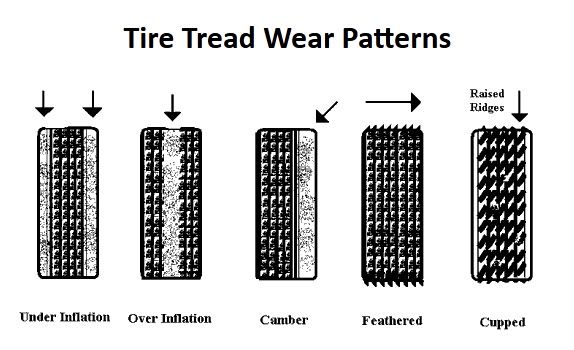 Tire performance can diminish significantly before your tread hits 2/32”. Even though the law deems fit for safe driving may not prevent you from hydroplaning or losing control in rainy, slushy conditions. If you think your tires may be close to needing replacement, have them checked out by a licensed mechanic.
Tire performance can diminish significantly before your tread hits 2/32”. Even though the law deems fit for safe driving may not prevent you from hydroplaning or losing control in rainy, slushy conditions. If you think your tires may be close to needing replacement, have them checked out by a licensed mechanic.
By Tom Krishner, The Associated Press
It’s time to get some traction.
At any time now, snow could fall over a broad swath of America, and that means your tires need to be checked.
Experts say if the rubber is worn, you could slide, crash or get stuck, even in a light snowfall. Depending on where you live and how badly you need to get someplace in bad weather, you might want winter tires. All-season tires might be an option, but they won’t start and stop as well in ice and snow.
Experts say late October is a good time to shop for tires and get them installed so you’re ready.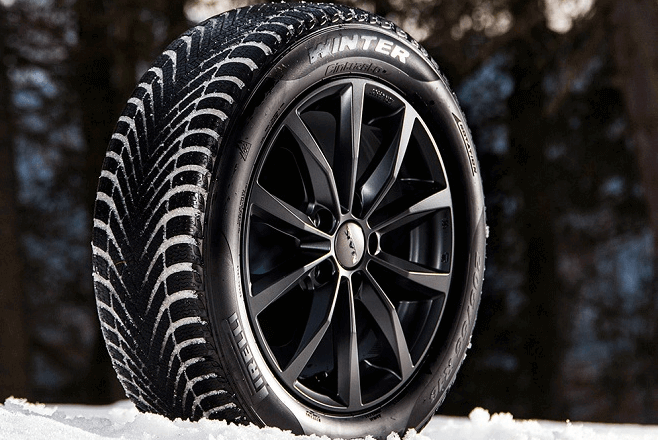 Here’s how to figure out whether you need new tires and tips from experts on what kind of rubber to buy:
Here’s how to figure out whether you need new tires and tips from experts on what kind of rubber to buy:
Check the tread depth: Stick a quarter into the tire grooves at several spots with George Washington’s head upside down. If you can see the top of Washington’s hair, you have 4/32 of an inch of tread or less. That means it’s about time to replace your tires. You may have a little time left in warm, dry weather, but tires with less than 4/32 won’t grip well in ice and snow. People used to use a penny to check tread depth. But if the top of Abraham Lincoln’s head can be seen, that means you’ve only got 2/32 inches of tread left. “At that point most tires are basically worn out and need to be replaced immediately,” says Gene Petersen, tire program manager for Consumer Reports, which does extensive tire testing.
Winter or all-season? It depends on where you live, how urgently you need to be somewhere in the snow, and whether your vehicle is 2-wheel-drive or all-wheel-drive.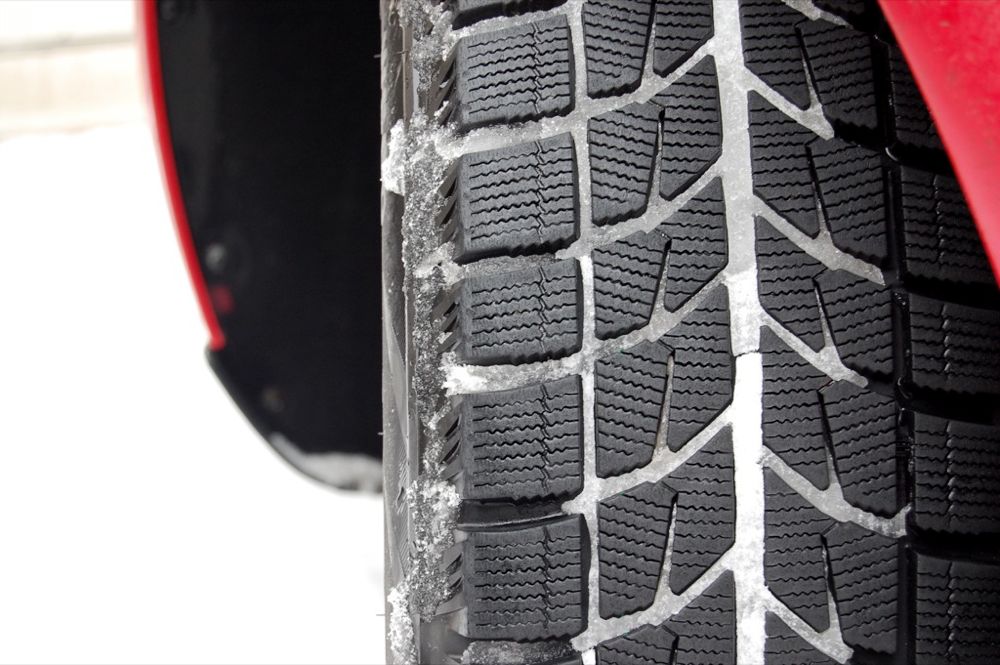 In an area with moderate snowfall, you probably can get by with all-season tires, especially if you can wait for plows to clear roads before going anywhere. Generally, if you live south of Cincinnati, Ohio, then all-season tires should work, says Woody Rogers, director of tire information for Tire Rack, an online tire store in South Bend, Ind. But to the north, where heavy snowfall is more likely, winter tires will be better. If the engine powers all four of your wheels, good all-season tires may suffice. Generally, winter tires on a two-wheel-drive vehicle grip better than all-season tires on a four-wheel-drive vehicle. Experts say all-wheel-drive makes a big difference starting off in snow. But it won’t help you stop in snow. That’s where winter tires come in. They’ll stop faster in slippery conditions because they grip ice and snow better due to specially designed soft tread compounds. In bad weather, winter tires grip almost like they’re being driven on dry roads, says John DiPiazza, part owner of A&A Tires in Milwaukee.
In an area with moderate snowfall, you probably can get by with all-season tires, especially if you can wait for plows to clear roads before going anywhere. Generally, if you live south of Cincinnati, Ohio, then all-season tires should work, says Woody Rogers, director of tire information for Tire Rack, an online tire store in South Bend, Ind. But to the north, where heavy snowfall is more likely, winter tires will be better. If the engine powers all four of your wheels, good all-season tires may suffice. Generally, winter tires on a two-wheel-drive vehicle grip better than all-season tires on a four-wheel-drive vehicle. Experts say all-wheel-drive makes a big difference starting off in snow. But it won’t help you stop in snow. That’s where winter tires come in. They’ll stop faster in slippery conditions because they grip ice and snow better due to specially designed soft tread compounds. In bad weather, winter tires grip almost like they’re being driven on dry roads, says John DiPiazza, part owner of A&A Tires in Milwaukee.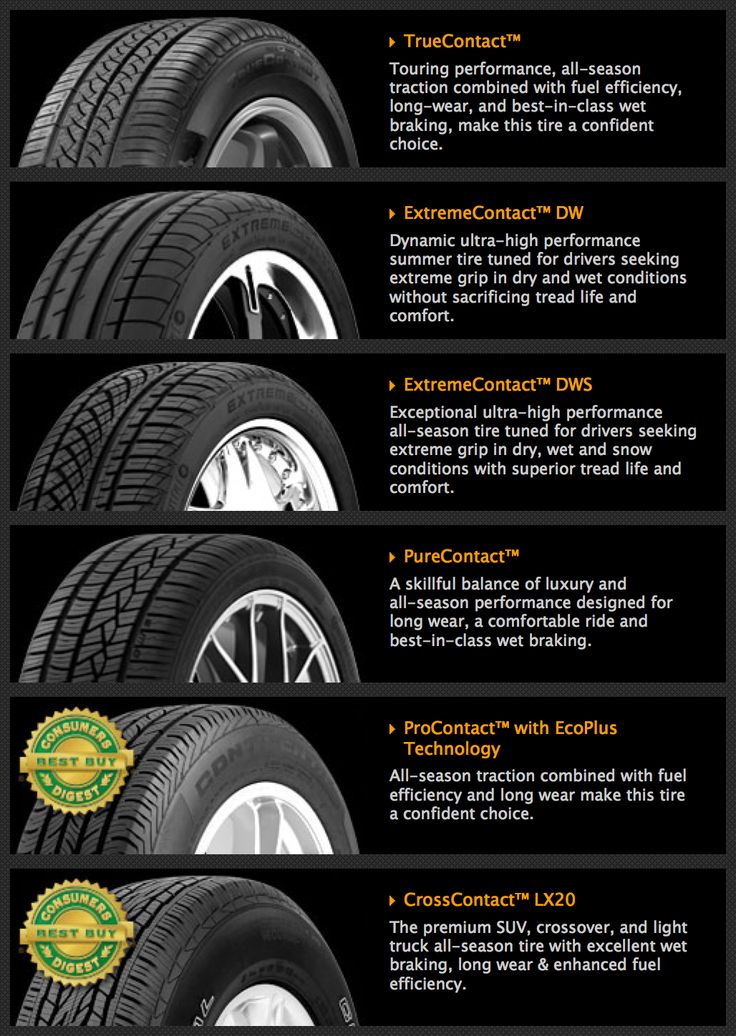 “It’s quite amazing,” he says.
“It’s quite amazing,” he says.
Read the reviews: If you decide to go with all-season tires, make sure you read test reports and consumer ratings. All-season tires vary wildly in their ability to grip snow, says Rogers, whose store also does tire testing. “The gap from good to bad is staggering,” he says. DiPiazza says you should stick to well-known brands for the best performance. If you choose winter tires, also read reviews. Tire Rack’s tests show less of a variance between snow tires from different brands. Deeper grooves generally mean more snow traction, but you can’t always tell performance from looking at a tire, Petersen says. Although winter tires have improved, they still compromise dry-pavement handling for snow and ice performance.
Replace all four tires: Putting snow tires on just the two drive wheels can make your car difficult to handle in snow and ice. When two wheels on one axle grip better than the other two, it creates a handling imbalance that could be treacherous if you’re trying to stop quickly or steer around something.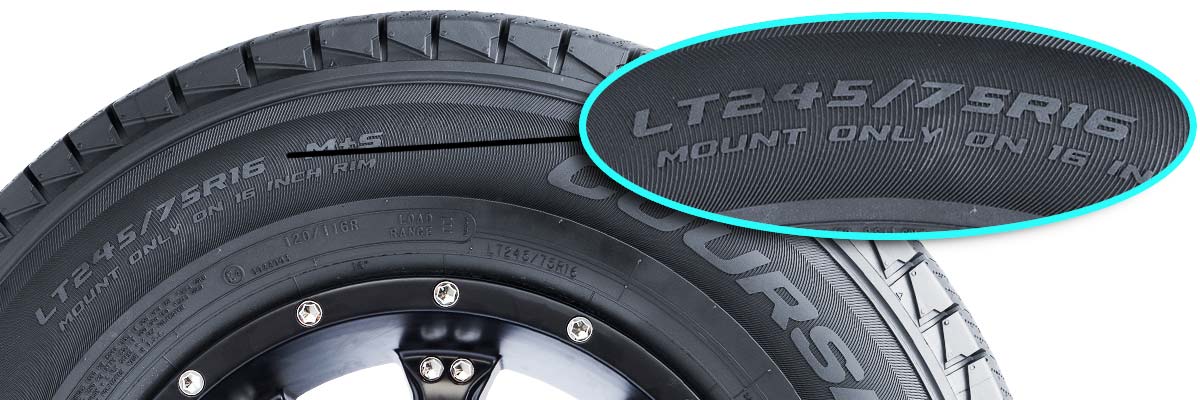 “Those are the situations where you need your car to work best, an emergency situation,” says Rogers.
“Those are the situations where you need your car to work best, an emergency situation,” says Rogers.
The price: Snow and all-season tires generally cost about the same. Consumer Reports found that sedan tires average around $145 each. SUV tires average $178 apiece. Shopping around could get you a better deal. Make sure the price includes mounting and balancing.
Buy early: Experts say now is the time to buy, when there’s time to do research and there’s an abundant selection of snow or all-season tires. If you wait until the first snowfall, you might get stuck with what the dealer has on hand in the size that fits your car. But don’t buy too soon: DiPiazza recommends installing winter tires when the daily high temperature is generally below 50 degrees.
We invite you to use our commenting platform to engage in insightful conversations about issues in our community. We reserve the right at all times to remove any information or materials that are unlawful, threatening, abusive, libelous, defamatory, obscene, vulgar, pornographic, profane, indecent or otherwise objectionable to us, and to disclose any information necessary to satisfy the law, regulation, or government request. We might permanently block any user who abuses these conditions. As of June 15, 2022, comments on DenverPost.com are powered by Viafoura, and you may need to log in again to begin commenting. Read more about our new commenting system here. If you need help or are having issues with your commenting account, please email us at [email protected].
We might permanently block any user who abuses these conditions. As of June 15, 2022, comments on DenverPost.com are powered by Viafoura, and you may need to log in again to begin commenting. Read more about our new commenting system here. If you need help or are having issues with your commenting account, please email us at [email protected].
Most Popular
Here's every concert coming to Red Rocks Amphitheatre in 2023 (so far)
Colorado pulls plug on unsolicited I-25 North project proposal as lawmakers blast decision
Denver metro area school closures for Nov. 18, 2022
Lauren Boebert poised to win even as Adam Frisch gains enough votes to force automatic recount
Lake City angler catches the largest brook trout in Colorado history
 17-18, 2022
17-18, 2022Colorado snow totals for Nov. 17-18, 2022
Lauren Boebert holds lead over Adam Frisch as clerks begin reporting the last of their ballots
Denver metro area school closures for Nov. 17, 2022
Colorado's RSV, COVID and flu hospitalizations all rising, adding new strain to health care system
Kiszla: Want coach Nathaniel Hackett gone? Frustrated Broncomaniacs can vote with their feet.
It doesn't matter if it's summer, winter or all-season tires: tread depth is extremely important. To confirm this statement and determine what the minimum tread depth is, ADAC experts tested winter tires in size 185/60 R14 in new condition and with different tread depths.
To confirm this statement and determine what the minimum tread depth is, ADAC experts tested winter tires in size 185/60 R14 in new condition and with different tread depths.
It is a well-known standard that the minimum tread depth for passenger car tires in Europe is set at 1.6 mm to ensure road safety.
But ADAC's extensive testing has proven that the legally defined profile depth limit only describes a margin of safety. For summer tires, the profile must have a depth of at least three millimeters, and at least four millimeters for winter and all-season tires. Less depth will be critical on wet roads, snow or slush.
The legal situation is clear: when your car tires (usually eight to nine millimeters tread depth when purchased) have worn down to the minimum allowable mark of 1.6 mm, they become more unusable and must be replaced.
However, in some European countries, such as Austria, winter tires with a tread depth of less than four millimeters are considered summer tires and are even allowed to be driven on certain routes in winter.
Check the tire tread depth several times a year for your own safety, and remember that the minimum tread depth of 1.6 mm is strictly legal. For safe driving, tires should be changed from a tread depth of 3 or 4 mm.
In order to find out what effect a small tire tread depth has on tire performance, the ADAC test team tested 185/60 R14 winter tires in new condition (profile depth of about 8 mm), as well as worn with 7.5 and 4 mm tread depth.
On snow, the differences between new and used tires were most pronounced. The braking distance of tires with a profile depth of 4 mm was already 3.2 meters longer at a speed of 30 km/h than with new tires.
Even more dramatic were the differences in traction when the tires needed good grip at launch or on inclines. The traction force depends on the depth of the sipes: the tread grooves "capture" loose snow, and the edges of the sipes adhere to a harder surface.
Here, even the 7.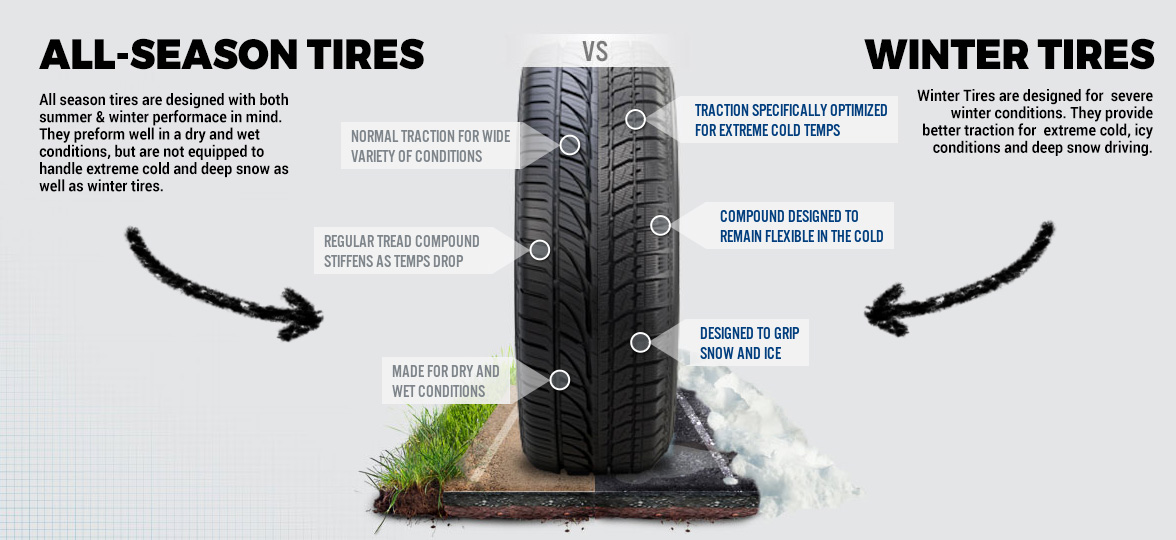 5 mm residual tread option can only gain 60% of the traction compared to the new tire, notes a Shina.Guide technician. Tires with a tread depth of 4 mm do not even reach half the result of new winter tires. What can we say about tires with a legally fixed minimum tread depth of 1.6 mm, which simply have nothing to row snow with.
5 mm residual tread option can only gain 60% of the traction compared to the new tire, notes a Shina.Guide technician. Tires with a tread depth of 4 mm do not even reach half the result of new winter tires. What can we say about tires with a legally fixed minimum tread depth of 1.6 mm, which simply have nothing to row snow with.
During the test, ADAC testers tried, among other things, to evaluate the traction of summer tires on snow, but the most they could show was a quarter of the traction of a new winter tire and more than 7.5 meters of additional braking distance at a speed of 30 km/h .
On wet pavement, it is important to avoid sudden hydroplaning, which means that tires with longitudinal grooves and sipes should absorb and displace as much water as possible.
Tires worn down to 4 mm begin to “float” on the water already at a speed of 63 km/h, while new winter tires do not until the moment when the speedometer needle reaches 87 km/h.
In braking performance from 80 km/h on wet road surfaces, tires with a profile depth of 4 mm lose 7% of the braking distance to the new ones.
The difference in stopping distance between new and worn winter tires on dry pavement is also present. But the advantage in this matter is on the side of tires with a small residual tread depth. The reason is simple: flattened tread blocks deform less during braking, so more of the tread is in contact with the asphalt. However, dry roads are hardly a common occurrence even in countries with mild winter climates, and it turns out that in practice there are no advantages!
Testing with winter tires proves the enormous effect tread depth has on winter tire performance. And this also applies to summer and all-season tires. If you want to be safe, you should change the tires on your car no later than the moment when the minimum tread depth reaches three or four millimeters .
A warning to all motorists: using winter tires in summer is a bad idea. Due to the peculiarities of the tread pattern and the rubber compound, their braking distance is much longer compared to summer tires.
The corresponding bill was prepared by the Department of Road Safety of the Ministry of Internal Affairs of Russia. It was developed on behalf of the President, which pointed out the need to establish uniform requirements in the regulatory legal acts of the Government regarding the use of car tires in the operation of vehicles.
It can be assumed that the whole problem was in the Gazelles. The fact is that in the rules of the road, in particular in the provisions for the admission to the operation of vehicles, it is prescribed that the tires of cars have a residual tread height of less than 1.6 mm, trucks - 1 mm, buses - 2 mm, motorcycles and mopeds - 0.8 mm.
"Gazelle", as well as the Korean Porter, category "B" cars. Their maximum weight does not exceed 3.5 tons. That is, the tread depth should be 1.6 mm. However, in all other respects, these are trucks.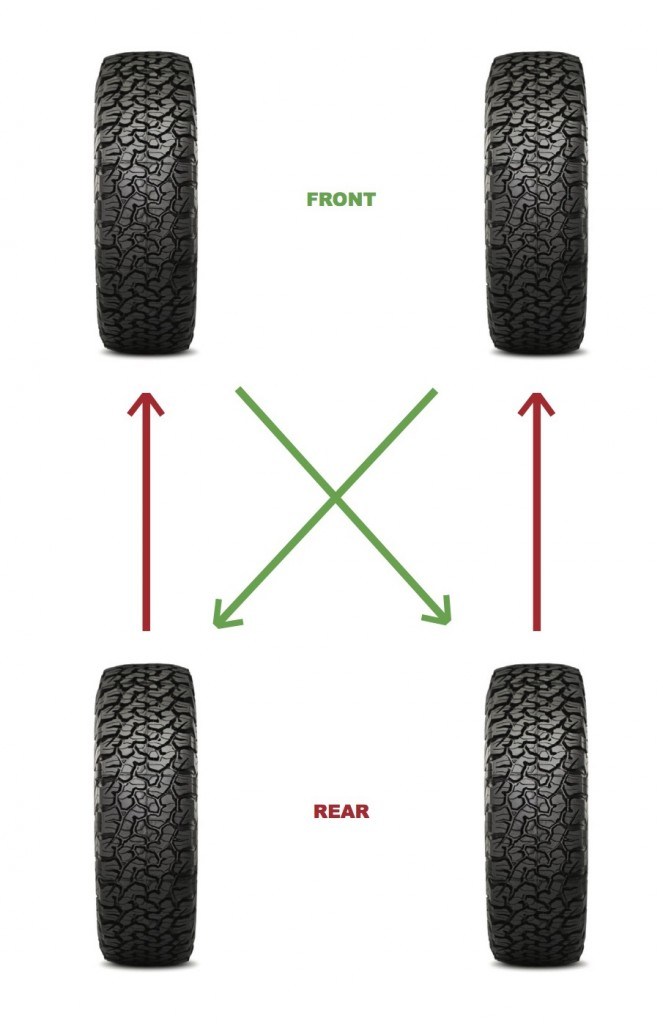 They are designed to carry goods. That is, they can roll tires up to one millimeter?
They are designed to carry goods. That is, they can roll tires up to one millimeter?
According to the requirements of the technical regulation on the safety of wheeled vehicles in Russia, according to the requirements of the same regulation of the Customs Union - they remain trucks. Category N1 - vehicles intended for the carriage of goods, having a maximum mass of not more than 3.5 tons.
In general, everything is very complicated with the classification of vehicles. What, for example, include pickups? They also belong to the N1 category both in the international and in the Russian qualification, despite the fact that many of them can be managed with an open category "B" in the rights. Here, cars are already divided according to their functionality. By the way, many pickups are prohibited from entering the city center without a permit: the carrying capacity is more than a ton. Many of them can be driven with a category "C" license - their maximum weight is more than 3.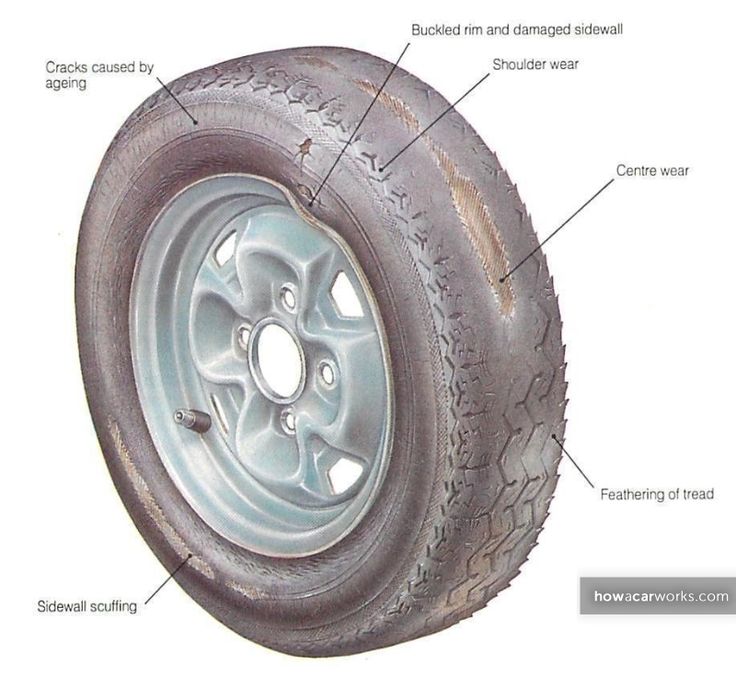 5 tons.
5 tons.
Now, in accordance with the order of the President, the Ministry of Internal Affairs has decided to indicate the depth of the tread for each vehicle. For category L vehicles - these are all mopeds, motorbikes, mokiks, as well as motorcycles, scooters and even tricycles and quadricycles - the residual tread depth is set to at least 0.8 mm.
For vehicles of categories N2, N3, O3, O4 - these are trucks and trailers, the maximum mass of which is over 3.5 tons - 1.0 mm. 1.6 mm .
For vehicles of categories M2, M3 - these are buses, that is, all with more than eight passenger seats - 2.0 mm.
For the first time, the Basic Regulations for the Authorization of Vehicles set out the requirements for winter tires and explains which tires are considered as such.
The remaining tread depth of winter tires intended for use on icy or snowy road surfaces during operation on the specified surface is not more than four mm. Please note that we are talking specifically about their use on a snowy or icy area.